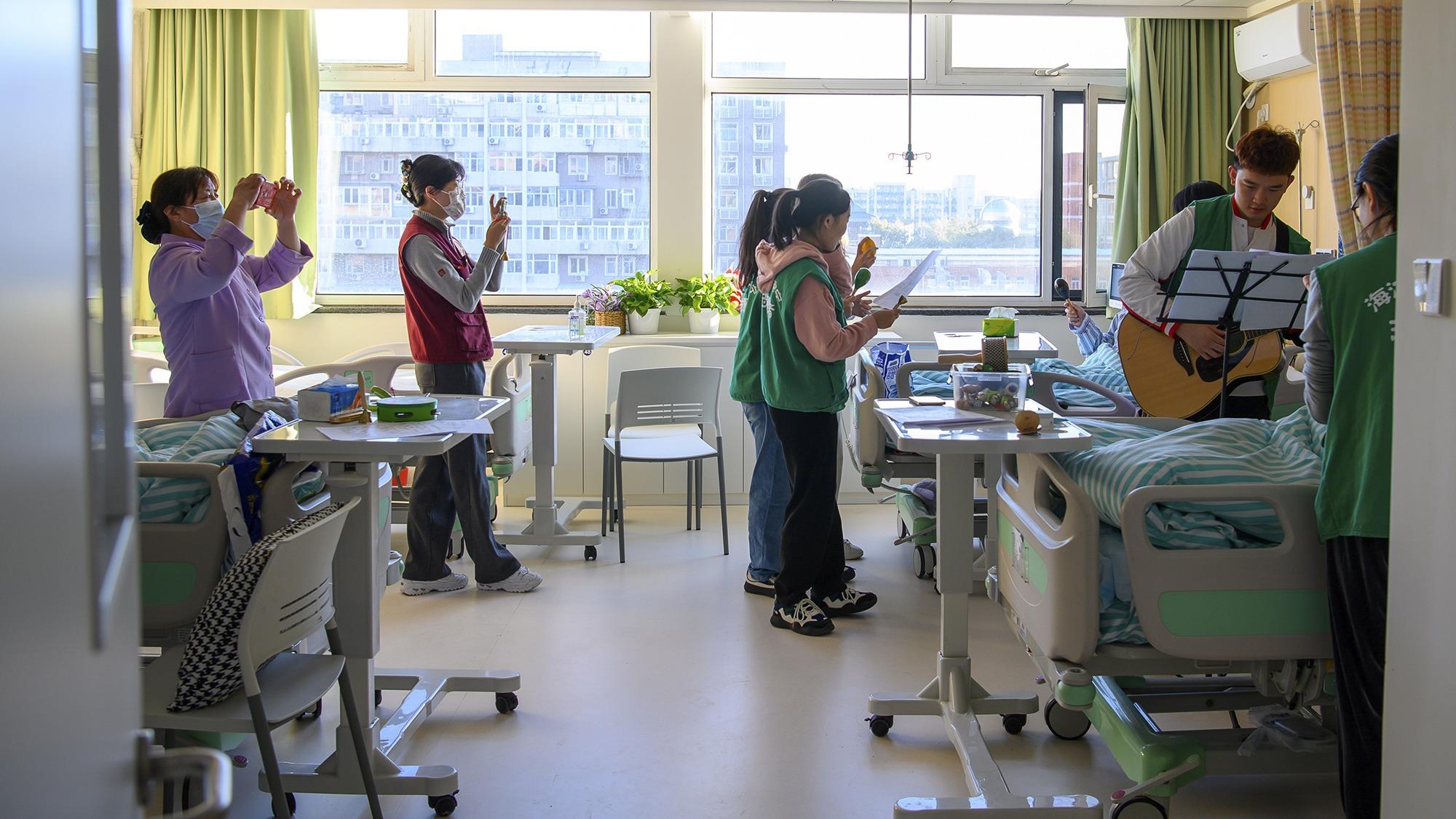 At a palliative care ward in the Beijing Haidian Hospital, volunteers provide music therapy to comfort patients. (PAN SONGGANG / SUN REN / FOR CHINA DAILY)
At a palliative care ward in the Beijing Haidian Hospital, volunteers provide music therapy to comfort patients. (PAN SONGGANG / SUN REN / FOR CHINA DAILY)
At a palliative care ward in the Beijing Haidian Hospital, an 82-year-old is busy typing his new book.
Wearing an oxygen nasal catheter, the information technology expert explains why the development of digital transformation can help change rural industries and how enterprises can benefit from digital technology.
"With the care from the medics and volunteers, my pain has been alleviated," the patient surnamed Wang says.
From the hospice care center's establishment in 2017 to April, it increased the number of beds from six to 50 and received nearly 700 terminally ill patients, according to the hospital.
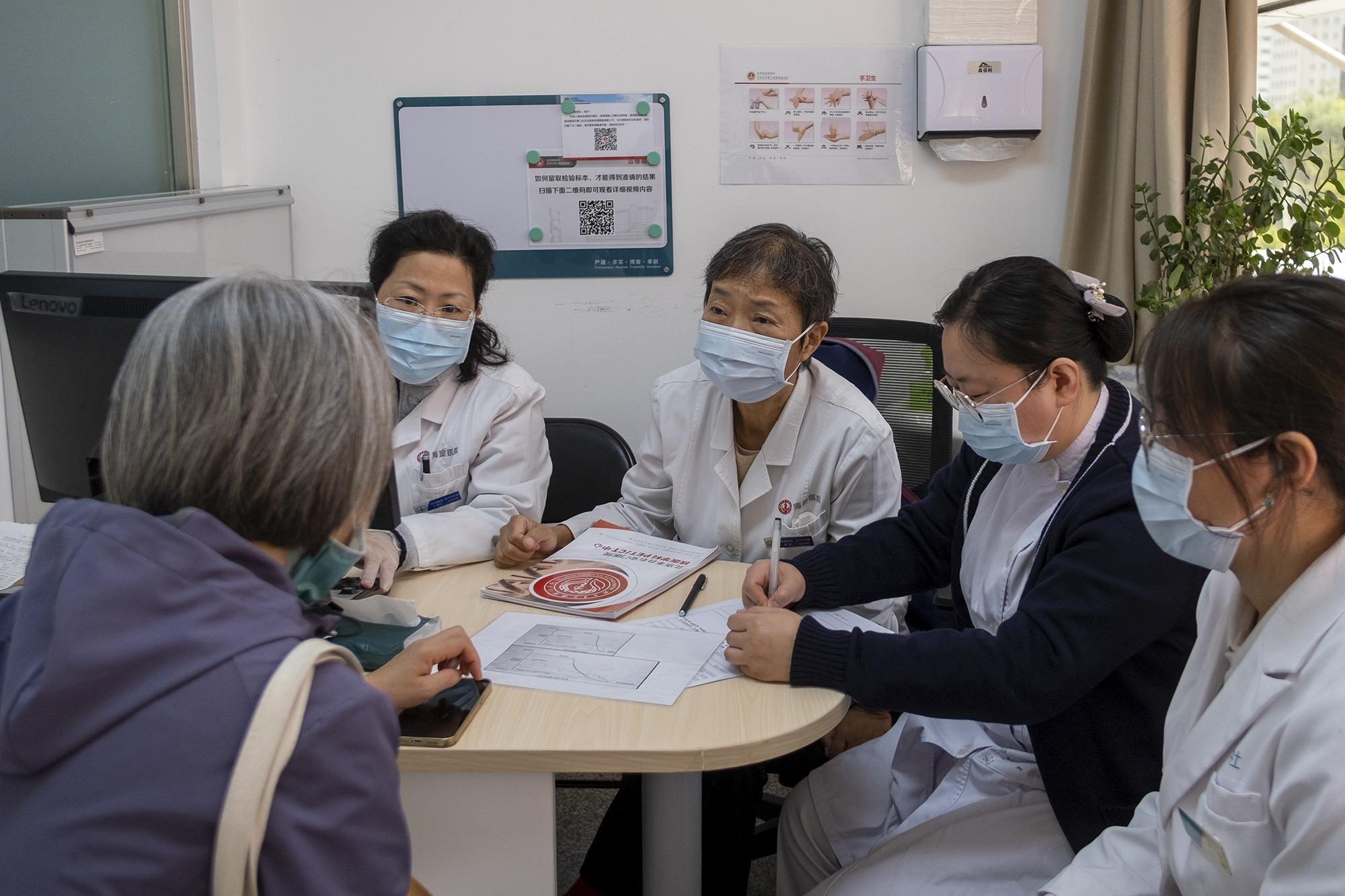 Qin Yuan (middle), head of the Beijing Haidian Hospital's palliative care center, talks with a patient. (PAN SONGGANG / SUN REN / FOR CHINA DAILY)
Qin Yuan (middle), head of the Beijing Haidian Hospital's palliative care center, talks with a patient. (PAN SONGGANG / SUN REN / FOR CHINA DAILY)
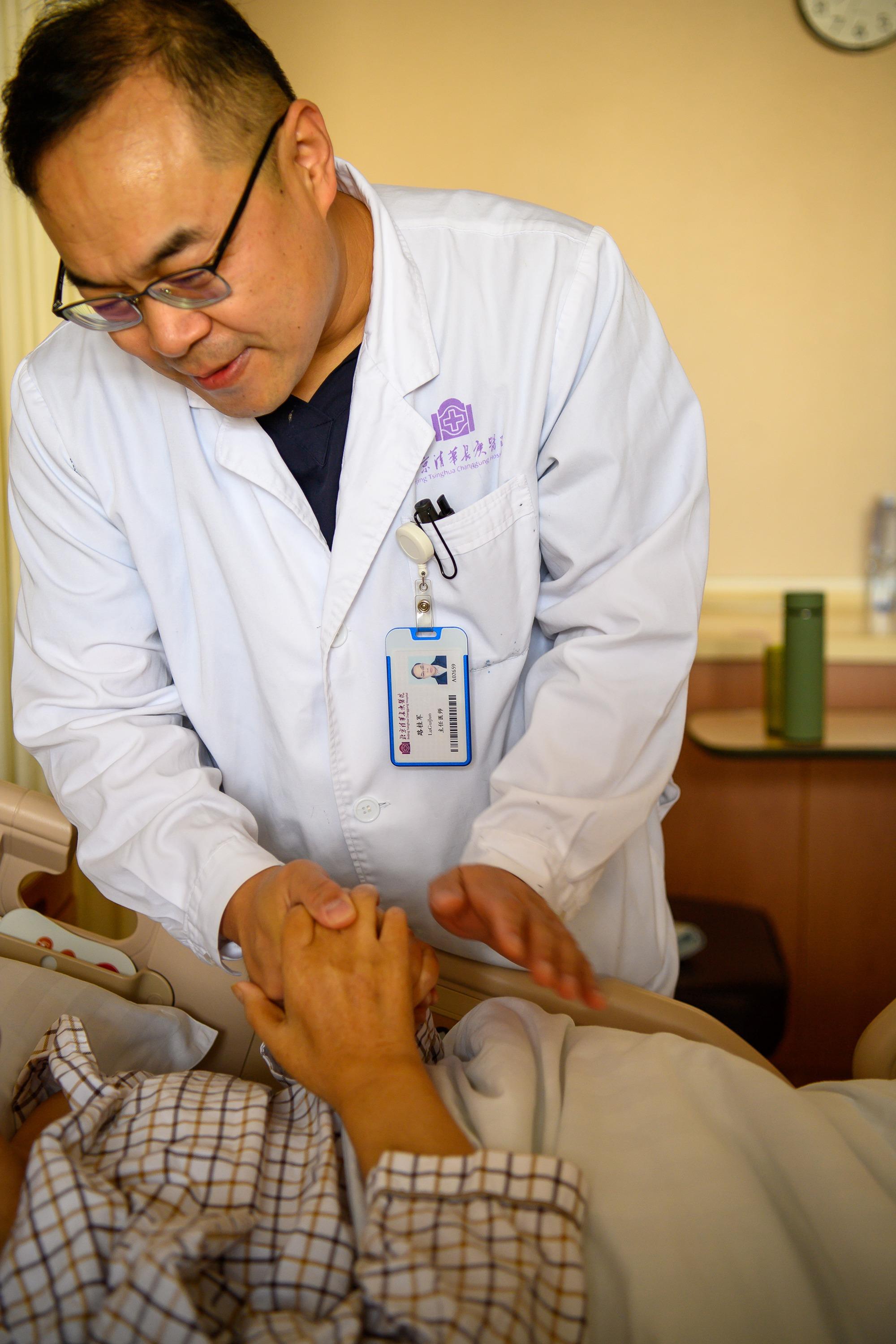 A doctor chats with a patient holding his hand at the Beijing Tsinghua Changgung Hospital. (PAN SONGGANG / SUN REN / FOR CHINA DAILY)
A doctor chats with a patient holding his hand at the Beijing Tsinghua Changgung Hospital. (PAN SONGGANG / SUN REN / FOR CHINA DAILY)
Qin Yuan, head of the center, has seen increasing numbers of patients and their families seeking information about the service in recent years.
So far, about 100 medical institutions in Beijing have set up palliative care departments, offering 950 beds for terminal patients, according to the latest statistics. By 2025, there will be 1,800 beds.
Similar service is accessible in 185 prefectural regions across the country, according to the National Health Commission.
Palliative care is a comprehensive form of treatment that helps reduce or eliminate pain and other distressing symptoms of illness.
Since the palliative care team was established at the Beijing Tsinghua Changgung Hospital in 2019, Lu Guijun has helped hundreds of patients maintain their dignity before death.
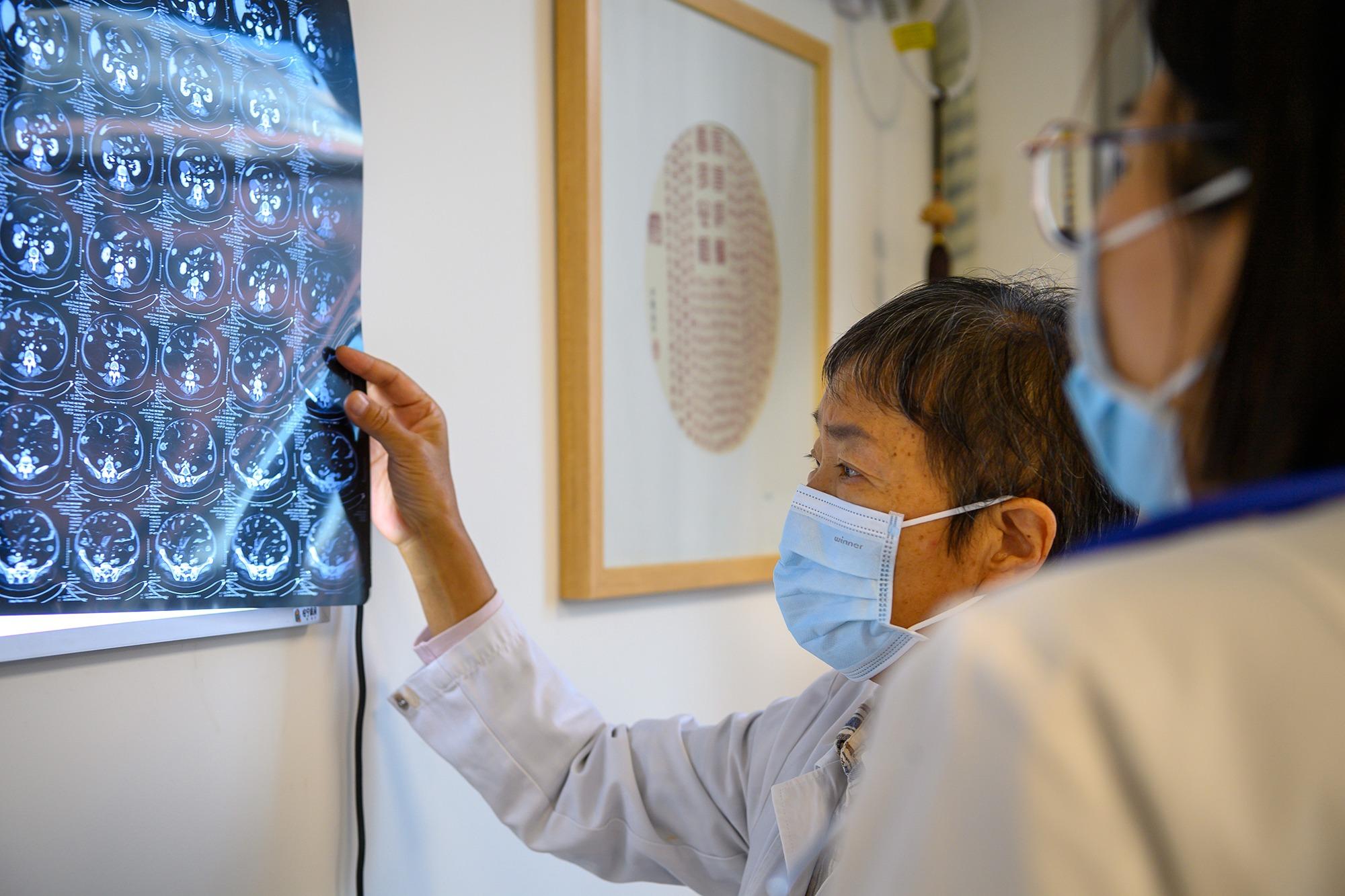 Studying an X-ray image of a patient, Qin discusses options with her team. (PAN SONGGANG / SUN REN / FOR CHINA DAILY)
Studying an X-ray image of a patient, Qin discusses options with her team. (PAN SONGGANG / SUN REN / FOR CHINA DAILY)
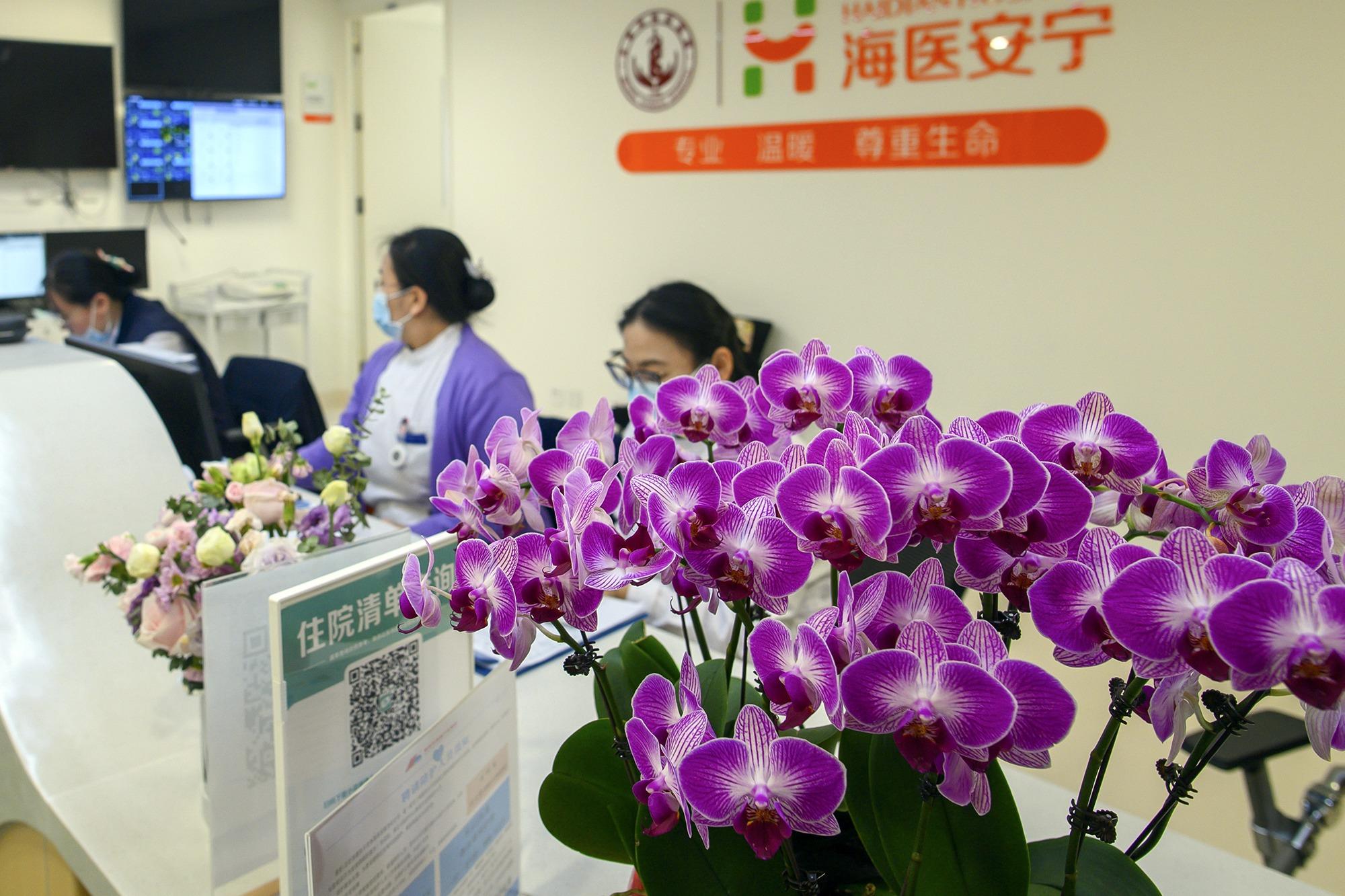 Orchids add a dash of color to the Beijing Haidian Hospital's palliative care center. (PAN SONGGANG / SUN REN / FOR CHINA DAILY)
Orchids add a dash of color to the Beijing Haidian Hospital's palliative care center. (PAN SONGGANG / SUN REN / FOR CHINA DAILY)
A patient's son once told him that he had been afraid of seeing Lu, because the doctor reminded him of his mother's passing, which was the darkest moment of his life.
In Lu's team, Sun Guanxian helps provide emotional support and psychological therapy to every family member, even after a patient has passed away.
Sun says talking about death is not easy in Chinese culture and death education is a part of palliative care.
"Such care relies on an interprofessional collaborative team to manage the complicated needs of patients and their families, such as pain relief, emotional support and company," Zhang Xinyan, a doctor from Lu's team, says.
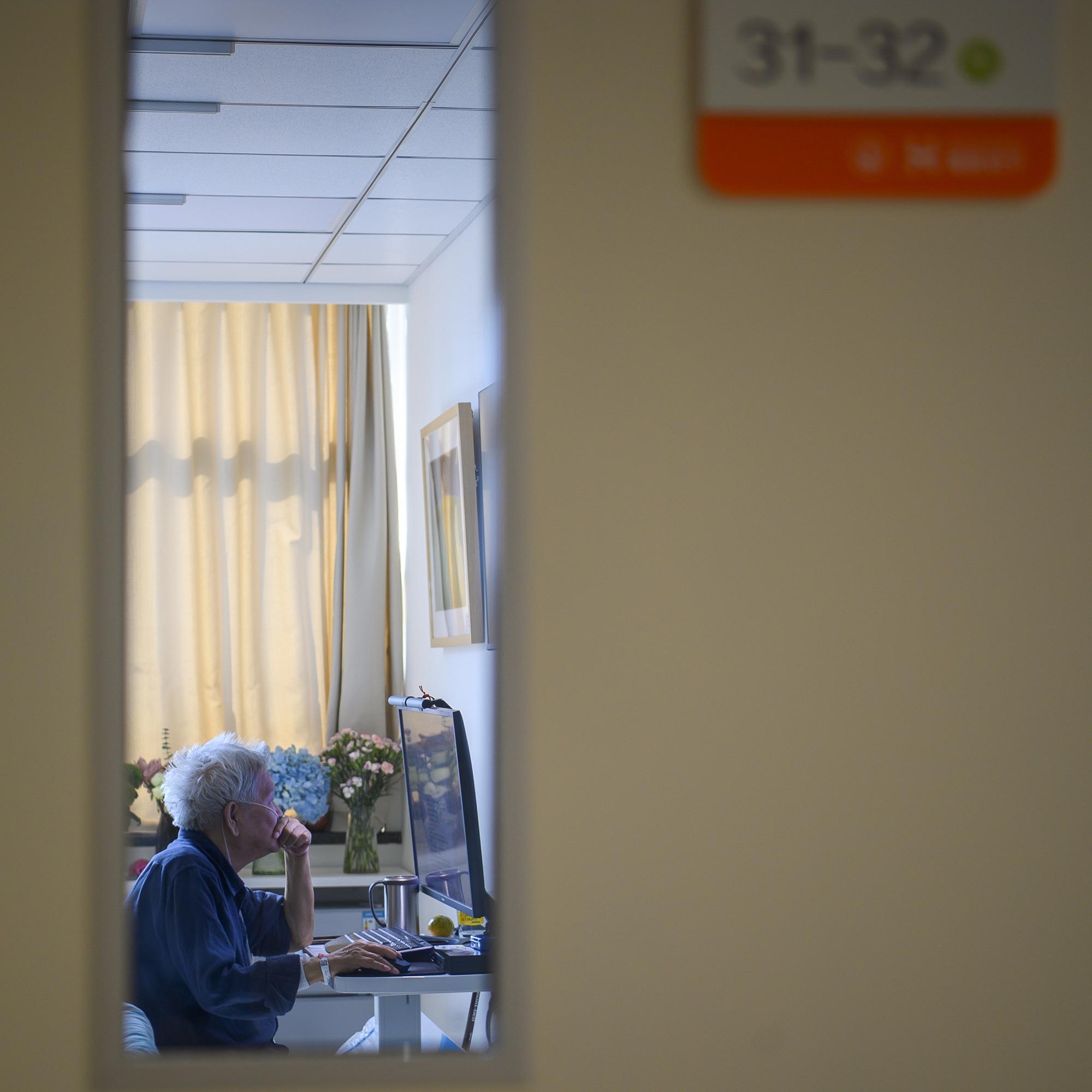 Wang, an 82-year-old information technology expert, is busy typing his new book on the digital economy. (PAN SONGGANG / SUN REN / FOR CHINA DAILY)
Wang, an 82-year-old information technology expert, is busy typing his new book on the digital economy. (PAN SONGGANG / SUN REN / FOR CHINA DAILY)
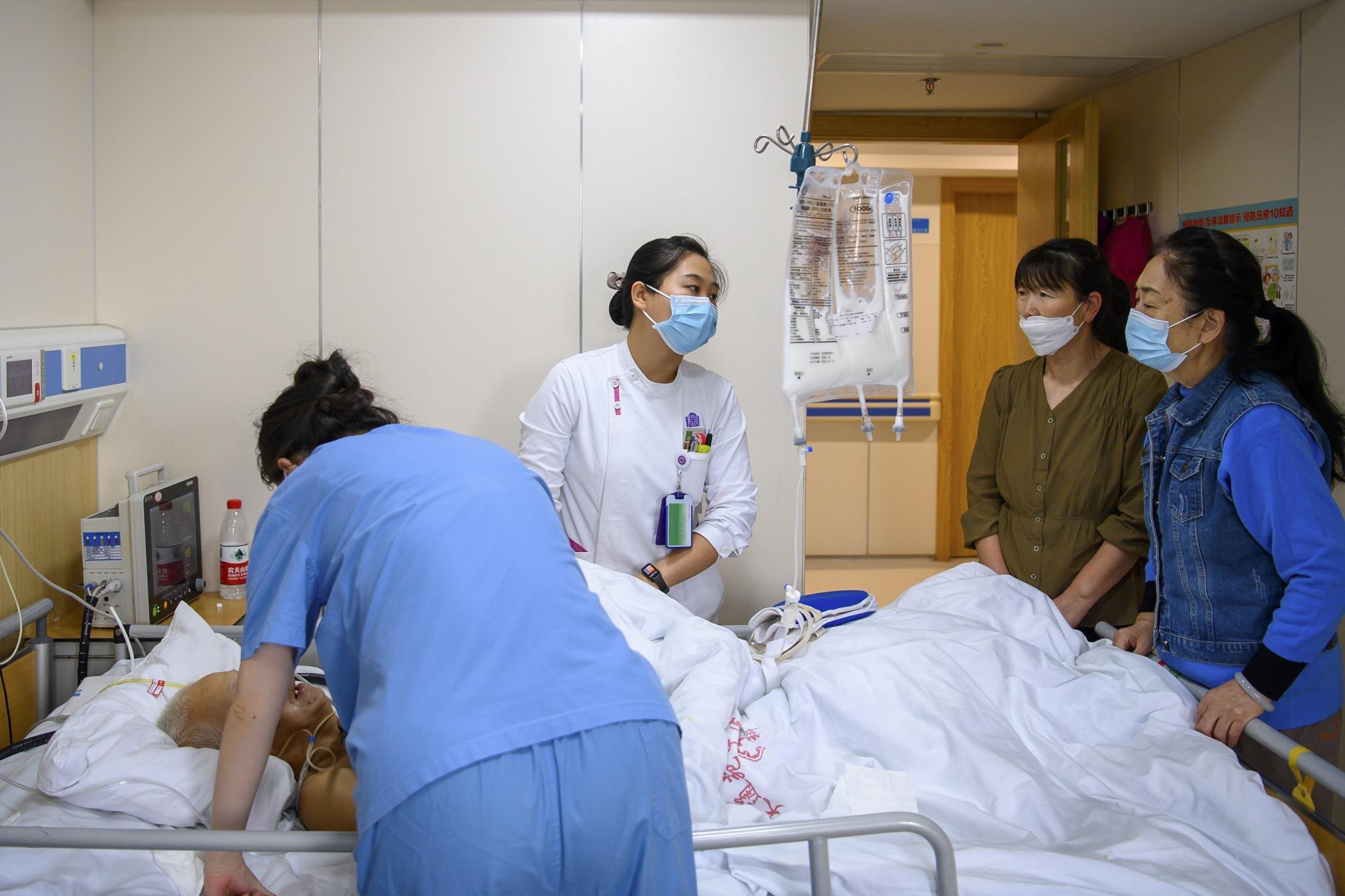 Zhang Xinyan, doctor from the Beijing Tsinghua Changgung Hospital's palliative center department (at foot of bed), suggests a course of treatment at the Tiantongyuan TCM hospital in Changping district, Beijing. (PAN SONGGANG / SUN REN / FOR CHINA DAILY)
Zhang Xinyan, doctor from the Beijing Tsinghua Changgung Hospital's palliative center department (at foot of bed), suggests a course of treatment at the Tiantongyuan TCM hospital in Changping district, Beijing. (PAN SONGGANG / SUN REN / FOR CHINA DAILY)
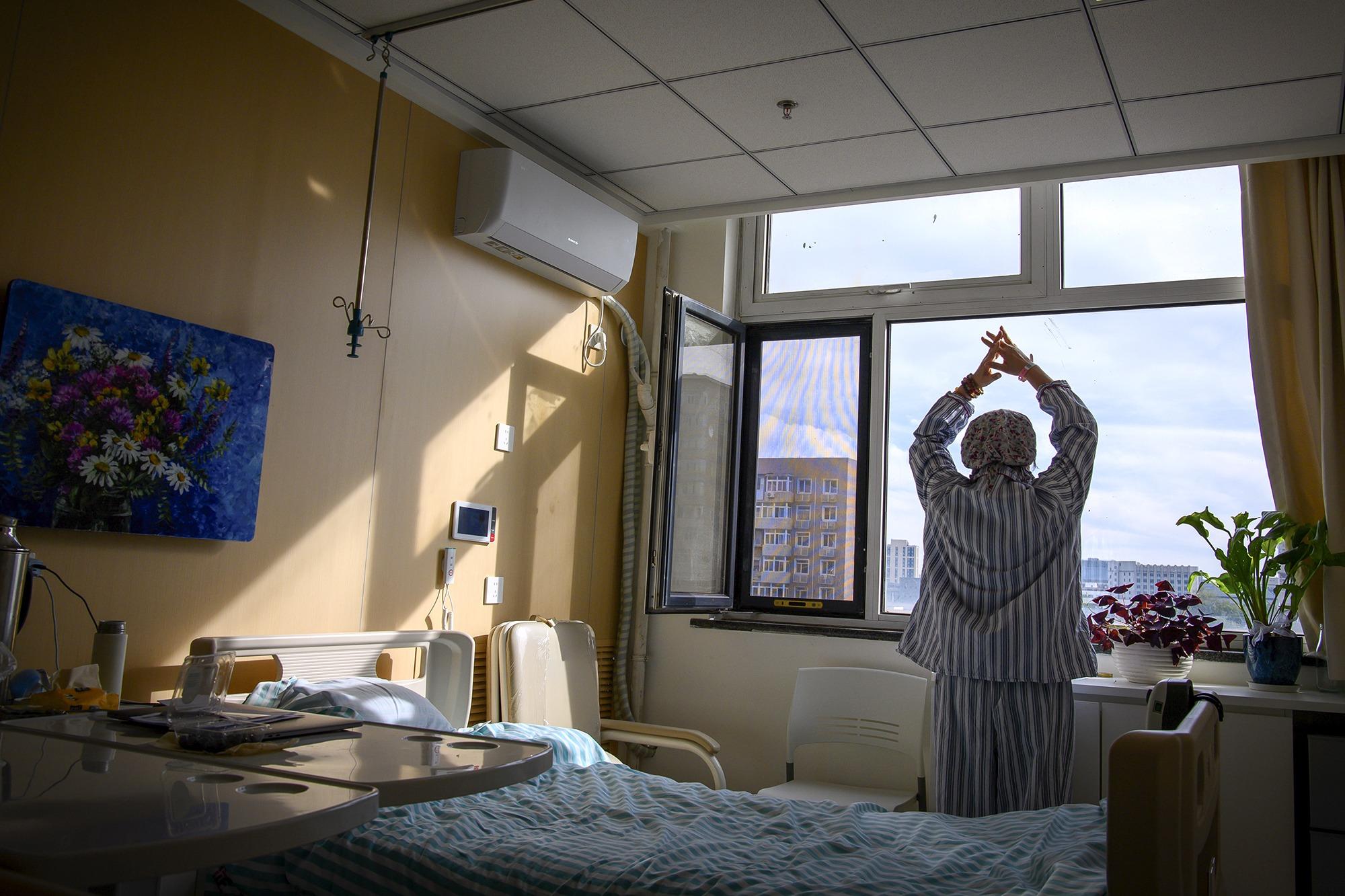 Enjoying the afternoon sunshine, a patient stretches in her ward of the Beijing Haidian Hospital. (PAN SONGGANG / SUN REN / FOR CHINA DAILY)
Enjoying the afternoon sunshine, a patient stretches in her ward of the Beijing Haidian Hospital. (PAN SONGGANG / SUN REN / FOR CHINA DAILY)
Since the country's first hospice care center opened in Tianjin in 1988, hospice care departments have been set up in more than 4,000 medical institutions nationwide, compared to 276 in 2018, according to the National Health Commission.
Estimates show that even with the surge in such services, only two or three of every 100 terminal patients actually receive palliative care.
Demand for palliative care is growing as China's population ages.
According to the National Bureau of Statistics, the population aged 65 and above accounted for 14.9 percent of the total population in the country by the end of 2022, and is expected to exceed 30 percent in 2050.


